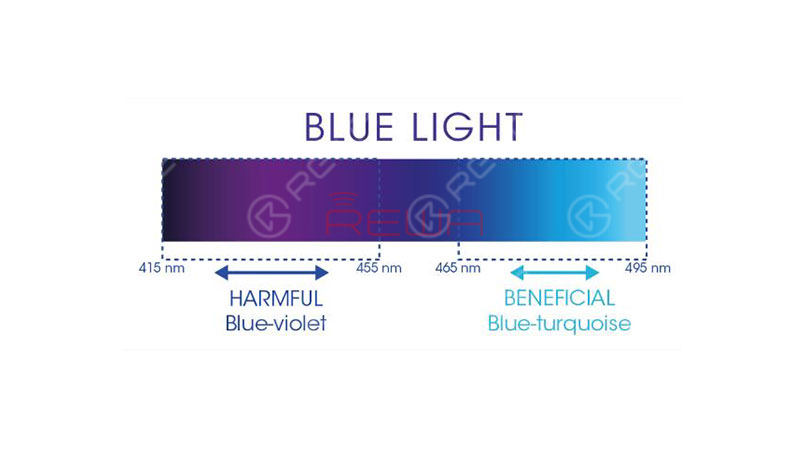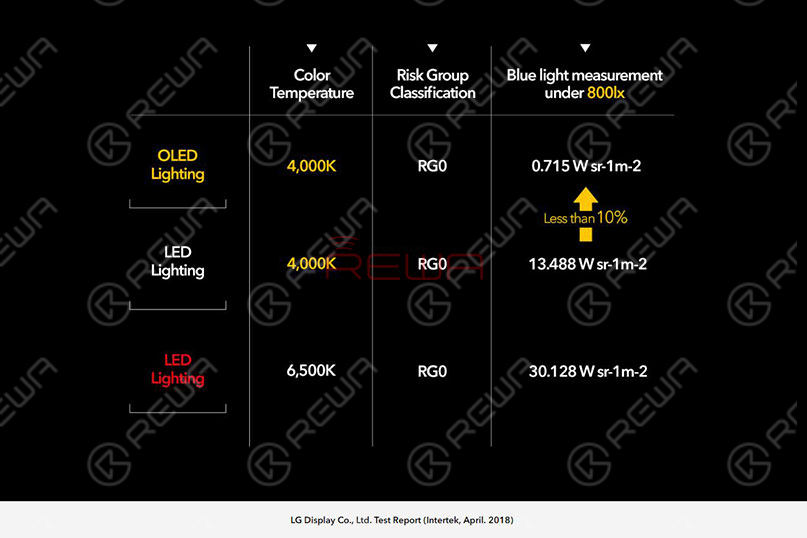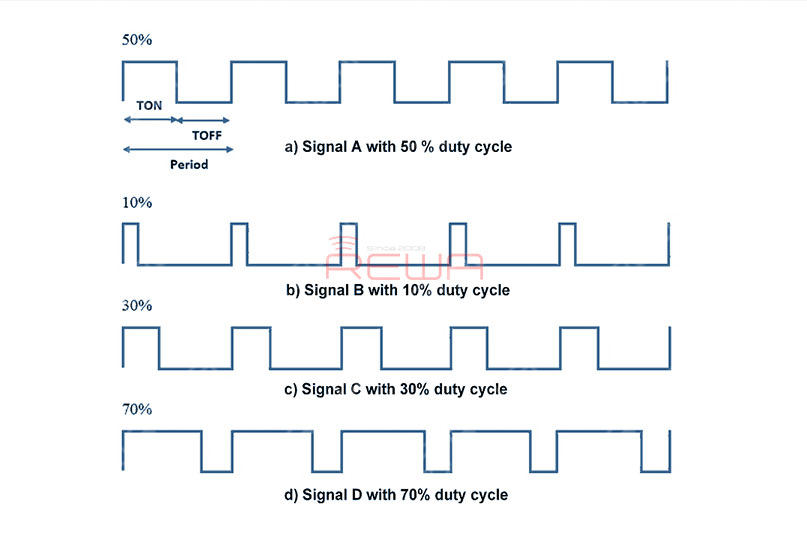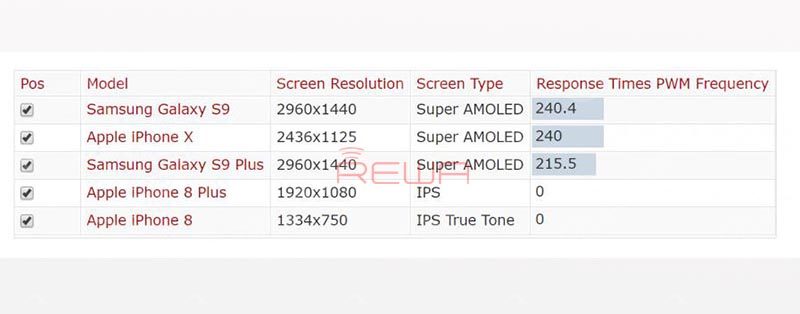Which One Is More Harmful To Eyes? OLED or LED ?
Statista’s statistic shows the total number of mobile phone users worldwide from 2015 to 2020. In 2019 the number of mobile phone users is forecast to reach 4.68 billion.
In recent years OLED technology has emerged as the leading smartphone display technology, and the world's most popular phone vendors are all shipping AMOLED smart phones.
The AMOLED displays are thought to cause ‘eyes hurt’ because of low-frequency dimming by AMOLED manufacturers. so here comes the question, which one is more harmful to eyes? OLED or LED?
RELATED POST:
The Signs That Your Phone Needs A New Battery
World’s Biggest E-waste Dump – Opportunities Come With Problems
The two factors that causes 'eyes hurt 'are blue light and flicker.
Blue light is high energy visible light, widely acknowledged to bear harmful effects like discomfort to the eye and damage to the retina, as well as serve as a contributing factor to diseases such as cancer, diabetes, heart disease, obesity and insomnia. Children seem to have delicate retinas that are highly susceptible to the dangers of blue light. 
Intertek, an independent quality assurance specialist firm in the UK also concluded that OLED lights emit merely 10% of the blue light emitted by LED lights with the same luminance and color temperature.

How to deal with blue light and avoid damage caused by HEV?
1. Use Flux or a similar application on your computer or laptop to reduce the amount of blue light emitted by the screen
2. Use an app on your mobile device to reduce the amount of blue light emitted by the screen.
3. Use HEV-filtering glasses or contact lenses
4. Use blue filter covers
The other factor that causes 'eyes hurt' is flicker.
Flicker is a visible change in brightness between cycles displayed on video displays. It applies especially to the refresh interval on Cathode ray tube (CRT) televisions and computer monitors, as well as Plasma based computer screens and televisions.
The switching light source causes flickering. The faster the switching speed, the faster the screen flicker. Most mobile phones adopt DC dimming and PWM dimming. DC dimming is a technology that adjusts the brightness by directly controlling the currents on both sides of the light-emitting device. The smaller the current, The lower the brightness.
IEEE PAR1789 recommends practices for modulating current in High Brightness LEDs for mitigating health risks to viewers. LCD screens mostly use DC dimming. DC dimming itself is a very straightforward method. But it has obvious drawbacks. As the wavelengths of the three primary colors are different, DC dimming can cause inevitable color casts at the extremely low brightness.
AMOLED displays use low-frequency PWM dimming technology. The lower the screen brightness, the lower the strobe rate, and the greater the possibility of human eyes being able to perceive, making it easier for sensitive people.
PWM dimming is a technique that adjusts the brightness by fast flickering, even if the human eyes cannot perceive the screen changes in the switching process, our brain responds to this phenomenon. Frequent flickering cause fatigue, which stimulates the refraction system to work together to accelerate the aging of vision.
The picture following is the Duty Cycle PWM Waveform.

Why DC dimming is not adopted by AMOLED displays? AMOLED displays are self-illuminating technologies that rely on organic materials. The display quality of the AMOLED display is directly related to the quality of the screen materials . The color difference between pixels will be clearly demonstrated. Under DC dimming, early models such as the Galaxy S, S2, and Note suffered from uneven white color and serious color casts. What’s sadder, this problem has not been solved well even so far. However, the PWM dimming reference solves the problem of the early low-brightness color cast in the AMOLED display, and in fact further improves the color stability.

How to avoid flicker damage?
1. To minimize flicker effects, do not watch the display in the dark.
2. Don't sit too close to the display.
3. To minimize PWM flicker, operate the display at its maximum brightness because that provides the highest duty cycle.
4. For TVs, monitors and laptops, look for published screen refresh rates of 120 Hz or greater. For PCs, set the highest available refresh rate.
5. People with very high flicker sensitivity may need to switch to LCD displays, which have relatively slow response times that will dampen any flicker. The LCDs should have full 24-bit color without Frame Rate Control (FRC) found in 18-bit (or less) displays.
There is also some advice about how to protect your eyes when using a mobile phone.
1. Get an anti-glare screen protector
2. Blink frequently/splash your eyes with water
3. Follow the 20/20/20 rule
With the mobile phone, there is the so-called 20/20/20 rule. Basically it means that every twenty minutes you need to look at something at least twenty feet away for at least twenty seconds.
4. Adjust the brightness, contrast, and text size.
5. Keep your screen clean
6. Keep the right distance
What’s your opinion on the topic? Share your thoughts in comments below!
Need LCD screen assembly replacement? REWA offers kinds of mobile phone repair screen replacement and tools for 10 years. Our newly launched online store - shop.rewa.tech provides the best cell phone repair replacement parts with affordable prices. What's more, it ha flash sale untimely. Don't miss out!
REWA Screen and Logic Board Repair Guide:
iPhone X Touch Screen Not Working
Fix iPhone XS Max Water Damaged
iPhone XS Max Broken Screen Repair
iPhone 6 No Service REWA Academy
Cell Phone Repair Courses:
iPhone X Series Logic Board Repair Course
iPhone Logic Board Repair Foundation Course
iPhone Logic Board Repair Handwork Course
iPhone Logic Board Repair Work Flow & Troubleshooting Course
iPhone Logic Board Repair Cases Course
1
0



No Comments

1
0
Share

Apr 23, 2021
ABOUT REWA
REWA is a world leading electronics repair business solutions provider who was founded in 2008 in HongKong. We are committed to delivering one-stop services covering Sourcing Solution, Technical Support Solution as well as Recycle & Resell Solution.


 Sign In
Sign In

 Shop
Shop

 Academy
Academy







